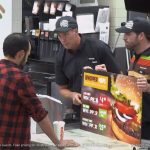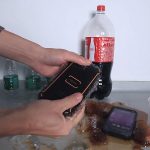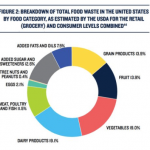A New Weapon In Food Safety: Tracking Everything We Eat, From Seed To Stomach
For a startup founder, Charlie Sweat carries a particularly heavy burden. In 2006, he was CEO of Earthbound Farm, the California-based farm and factory that produces the majority of the country’s packaged organic salads, when an E. coli outbreak struck the company’s spinach. Three people died, and 200 more were sickened. The source, investigators later surmised, was likely at the source of the spinach: an Angus cattle ranch that had leased land to a spinach grower.
The experience left Sweat unnerved, but it gave him an idea, too. Preventing outbreaks was a matter of knowing where the tainted food came from. But for legacy food companies, supply chain transparency is a daunting task, complicated by a vast number of suppliers, plants, distributors, and products. Different producers use different tagging systems and different sensors to track different things. Piecing together the details of what comes from where and goes where from seed to table had never really been done successfully before. If it could be, the implications for both public health, corporate transparency, and anti-counterfeiting efforts would be huge: Between food and pharmaceuticals, the market for tracking technologies is expected to grow to an expected revenue of $14.1 billion by 2020, according to a report by Allied Market Research in 2014.

That year, Sweat stepped down from Earthbound, capping a 16-year stint at the company, but he took his idea with him. A few months later, with money from the owners of Earthbound, friends and family and investors, he founded Frequentz, a Palo Alto-based startup that touts a comprehensive “track-and-trace” system for food safety—like FedEx tracking, but for each piece of the food supply chain, from seed to table.
Sweat says that by uploading and integrating any kind of data collected from any kind of tag or sensor, the system can discover the source of a food-borne pathogen, be it a contaminated farm or a broken refrigeration unit. The data could not only help companies identify inefficiencies on their supply chain, but also meet a rising crop of food safety regulations, and help satisfy our growing hunger for more transparency about the foods we eat. Named for the frequency of updates required for a transparent food supply chain, Frequentz aims to slash the number of food-borne illness outbreaks—and make a killing among efficiency- and transparency-conscious food companies.
“Since it is possible now to know everything about your product, the stakes are much higher if you haven’t done everything you can to validate what you sell,” says Sweat.
The food safety problem alone is immense and costly. Last year, Food Safety magazine counted 622 food safety recalls globally due to contamination, with each recall estimated to mean losses on average of $10 million. Food-borne pathogens affect as many as 48 million Americans a year, and according to research by Robert Scharff, an associate professor at Ohio State University, the annual cost of medical treatment, lost productivity, and illness-related mortality is $55.5 billion.
There’s also the threat of illegal practices like unregulated fishing or adulteration, in which suppliers might add something to food to lower their costs. Said to be most prevalent in liquids such as olive oil and in powders such as spices, this form of fraud is estimated to cost the industry $10 billion to $15 billion a year. In one example last year, ground cumin had been covertly mixed with peanut protein, prompting about 20 recalls and leading the U.S. Food and Drug Administration to issue a consumer warning.
The Frequentz software, custom-designed for each client, depends in part on a growing transportation “internet of things,” including sensors on food crates, in trucks, and on packages. It’s built to accept mobile data from sensors measuring the condition of produce, such as freshness and temperature, as well as scanners picking up packing label data and geographic coordinates. Unlike its handful of competitors, including HarvestMark and FoodLogiQ, Sweat says Frequentz has been designed to combine any data collected from any sensor.
Data from even the smallest farms and fishing vessels can be uploaded on the fly. Eventually, says Sweat, consumers at supermarkets will be able to access that data on their smartphones, including whether a product is fair trade, was harvested or made by workers earning living wages, or contains GMOs or gluten.
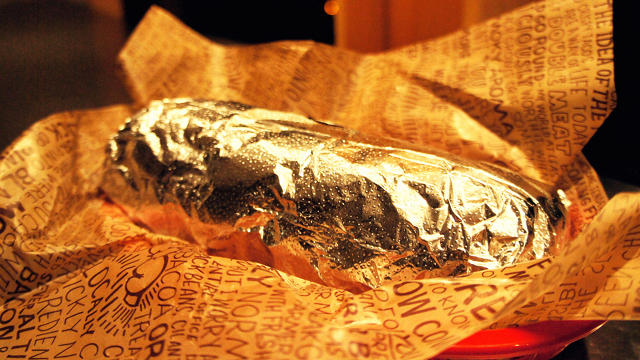
The Food Crisis That Changed Everything
The concept of “track and trace” for food is still a relatively new one for the legacy supply chains that bring the world its food. So far, the cost of such systems has been prohibitive for the food industry, which, despite trillion-dollar revenues in the U.S. alone, faces persistently thin margins. That hesitation can be seen in Frequentz’s business: In its first year, 2014, sales totaled $3 million; last year’s inched up to $4.5 million.
That calculus began to change last year, after an estimated 500 people fell ill after eating at Chipotle outlets in several states, most from norovirus. At least 60 suffered salmonella poisoning and more than 50 ate E. coli-contaminated food. (E. coli and salmonella bacteria tend to originate in feces and usually reach humans through raw or undercooked meat and other foods.) According to Chipotle, sales at locations that have been open for more than a year were down 23.6% for the quarter ending July 2016. Profits fell to $25.6 million from $140.2 million the year before.
Investors weren’t kind either: After shutting down all of its stores for safety training and giving away 6 million free burritos to generate a bit of positive PR, the restaurant chain lost nearly half its market capitalization from its pre-crisis high, or close to $11 billion. Chipotle executives have said they believe it could take 18 months for the stock price to recover. In a report, Deutsche Bank analyst Brett Levy noted Chipotle’s willingness to take drastic action, “but we also question whether [Chipotle] will ever regain its lost luster.”
Chipotle’s failure to promptly resolve and explain the outbreaks—and to offer more transparency to its customers—caused other companies to take notice, says Sweat. Now, Frequentz’s customers include food-based subsidiaries of the $65-billion German retail giant Metro AG, and he has projects in development at Costco and the Campbell Soup Co.
“If you can respond proactively in real time and explain to consumers what happened during an outbreak and how you are going to keep it from happening again, you can retain that consumer,” says Sweat. “Chipotle’s revenues are still down. Consumers vote with their wallets.”
Frequentz is also spreading out to the pharmaceutical industry, and expects cosmetics and personal products to soon embrace ingredient tracking as well. The company has received a total of $20 million in equity investment as well as investments from insiders and owners, with Sweat the largest individual investor. This month, Sweat says Frequentz will complete a Series C financing round led by investment firm Capricorn Healthcare & Special Opportunities, which also provided seed financing.
For its part, Chipotle recently launched its own track-and-trace program with one of Frequentz’s competitors, Durham, North Carolina-based FoodLogiQ. Chipotle had previously relied on its own tracking system, but last year’s outbreak exposed a critical lapse: Once ingredients got to stores, all tracking stopped. Tomatoes, for instance, from any number of sources, were mixed together during food prep.
That’s why, even after an extensive investigation by the Centers for Disease Control, the exact source of the two Chipotle outbreaks was never found. In February, the CDC concluded its investigation without tracking down exactly which food or ingredient was responsible, citing the problem of ingredients mixed at stores. Chipotle welcomed the decision.
Chris Arnold, a Chipotle representative, said the company now knows which supplier sent which item to which restaurant using package bar codes, “in much the same way overnight delivery services track package shipments around the world,” with the aim of tracking food “from seed to stomach.” With FoodLogiQ, they now track every ingredient all the way through food preparation. If you get sick at Chipotle and you know where you ate and what time, the company can more readily nail the source of the contamination.
Track-and-trace companies like Frequentz, FoodLogiQ, and HarvestMark specialize in gathering and analyzing data around the movement of food, but actually detecting viruses and bacteria on site is a different challenge. Other startups like Clear Labs, Ancera, and SnapDNA are racing to market with faster, cheaper, more reliable mobile pathogen tests, aimed at identifying the pathogens responsible for an outbreak in just hours and accelerating a process that typically takes weeks.
Working together, tracking and testing technology companies could make future food-borne pathogen outbreaks inexcusable. After a recent E. coli outbreak in flour sickened hundreds, the maker of the flour, General Mills, recalled 45 million pounds of it, about 2% of its annual output, and issued a set of recommendations to the Food and Drug Administration, including that it convene experts focused on identifying long-term solutions, like whole genome sequencing.
Still, supply chain transparency remains a venture fund backwater, with few new companies entering the space. Investments are relatively small—a few million dollars each. Tracking ingredients is a time-consuming slough that technology makes possible, but not easy. Most food companies are waiting for costs to come down, says Melissa Tilney, cofounder of AgFunder, a company that tracks investments in agriculture and food technology. “This is not considered the land of technology unicorns.”
After using Frequentz for a year and a half, Andres Cuka, chief operating officer at Marbelize, a giant Ecuador-based tuna processor, estimates it may be another three years before the Frequentz system pays for itself. That estimate is based not just on improved efficiencies, but on the assumption that increased transparency will allow him to raise prices and convince consumers to buy more Marbelize tuna.
Still, Sweat believes the food industry is at a tipping point, as consumers start to demand more transparent labeling. A law passed in May 2014 in Vermont pushed Congress to create a more comprehensive national food labeling law requiring GMO disclosure, which President Obama signed into law last month.
“This is going to drive more communication between consumers and food producers,” Sweat says. “It is a communication Frequentz facilitates.”
That level of transparency is valuable for small vendors as well, says Rob Trice, a partner in Better Food Ventures, a two-year-old seed stage food-tech investment fund. He’s invested in eHarvestHub, a startup providing mobile tagging and tracking to small family farms, enabling them to work efficiently with larger distributors and retailers. “Investors are fuming about Chipotle,” says Trice. “Starting now, companies are expected to have this technology in place.”

Knowing And Showing Your Supply Chain
Marbelize, which moves 4,000 tons of fish a month sold under 950 different labels around the world, turned to Frequentz a year ago when it wanted to distance itself from the proliferation of illegal fishing operations.
The system is designed to log events as simple as when a box of canned tuna moves from a truck to a processing plant or as complex as turning that tuna into a frozen entree. “We verify every time there is a chain of custody event or transformative event of the product,” Sweat says.
“If we could identify ourselves as having met all of the certifications—we are ‘dolphin safe’—it increases our marketability,” says Cuka, of Marbelize. “Consumers want to know where their tuna comes from, how it is caught. We want to show them everything about our tuna.”
Today, when a Marbelize boat hauls in a catch, the captain stands on deck with a computer tablet in hand taking photos that show the species, the dimensions of individual fish, and the abundance of the catch. The photos record the geolocation of the fishing boat, proving the catch was in legal waters. “We can see all of this in real time long before the boat comes in,” says Cuka. Formerly hidden operating inefficiencies, he adds, are now becoming obvious.
This year, Sweat has also signed up the Honduran Ministry of Fisheries, representing 2,400 fishing companies, and is negotiating with Myanmar’s wild shrimp industry, which has as many as 20,000 fishing vessels. “They have to have electronic solutions that validate their seafood was caught legally and sustainably” to comply with international fishing regulations, he says.
To Cuka, the dream is that consumers at the grocery store will someday be able to scan a QR code on a tuna can and see the photos of the fish at the moment of capture.
Millennials in particular want to know what they are putting in their bodies, says Eve Turow Paul, author of A Taste of Generation Yum, who consults with food companies about how to reach this target market. The trick to a premium price can be as simple as wrapping food in clear plastic, as Kind does with its bars.
“[Millennials] are anxious about an uncertain world and lack trust in the big companies that dominate it,” Paul says. Often the only thing they feel they can control is what they eat, or don’t eat. Thanks largely to millennial consumers, transparency now “is not negotiable,” Campbell’s senior manager for corporate social responsibility Niki King told a gathering of food and agriculture company executives this month during a webinar sponsored by the Center for Food Integrity, a food industry advocacy group. With no clear definition for “ethical,” “sustainable,” or even “healthy,” complete transparency is becoming the universal standard for a company’s trustworthiness with consumers.
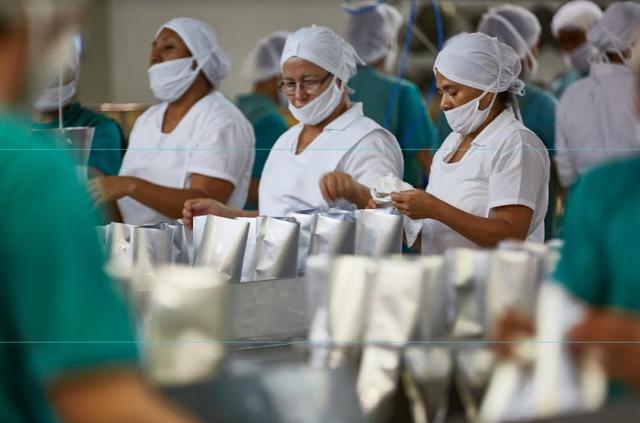
After Chipotle, track-and-trace technologies are simply “a cost of being in the food business,” says Charlie Piper, who recently stepped down as the CEO of HarvestMark. Still, he warns, the technologies alone are only as effective at monitoring the supply chain as the human beings who manage it. “The client has to be focused on continued improvement,” he says.
Chipotle’s new track-and-trace system, FoodLogiQ, is the most established of the new track-and-trace service companies. Eight years ago, after a mad cow disease outbreak in Canada, FoodLogiQ’s parent company Clarkston Consulting was hired to create a birth-to-slaughter tracing system for beef. In 2013, operating as a wholly owned subsidiary, FoodLogiQ was hired to design the track-and-trace system for Wholefoods’ “Responsibly Grown” program, which ranks produce suppliers on environmental sustainability.
FoodLogiQ’s business took off last fall when it was able to move its clients from paper spreadsheets to a cloud-based software service that could be accessed anywhere via smartphones.
“Our clients don’t need their own servers now. They don’t need an IT department,” says Dean Wiltse, FoodLogiQ’s CEO, echoing a mantra now heard throughout the growing cloud services industry. Revenues at the privately held company are expected to triple this year, he says. “Brands need to get their supply chain in order. They are being called to task.”
He echoes Sweat, underscoring that supply chain transparency will eventually sweep through all food-related supply chains for the cost savings alone.
“We cut the time spent dealing with suppliers in half,” he says. He tells customers to expect $1 savings for every 25 cents they invest in track-and-trace services.
Sweat’s chief selling point is regulatory compliance, but he closes deals by talking about saving money, through efficiencies and lower insurance rates. At Earthbound, he says, “we were able to show our insurance carriers that we reduced product recalls and reduced the cost of goods. So they reduced our insurance premiums.”
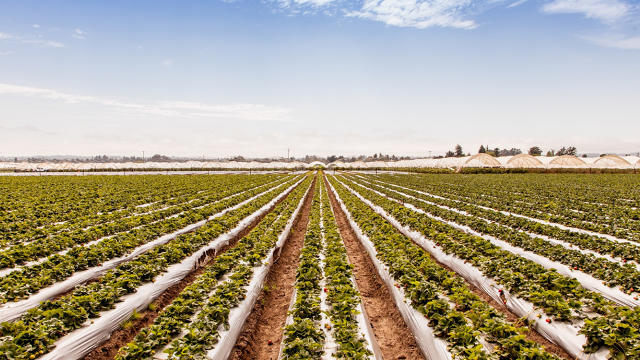
How The Berry Gets Made
None of this was obvious until recently. Five years ago, HarvestMark, another seed-to-table service inspired by the Earthbound E. coli outbreak, partnered with the Cincinnati, Ohio-based grocery chain Kroger to provide detailed supply chain information on food products in a few of its stores.
“Kroger stopped it after one year,” says HarvestMark founder Elliott Grant, who cited the cost—two cents per SKU, or individual inventory item—as impossible to justify.
There was another lesson too: People buying fish didn’t necessarily want to see their future dinner on the hook.
“We learned consumers don’t really care that much. They want to trust that the store where they shop has done this work. They don’t want to do it themselves.” In 2011, Grant sold HarvestMark for an undisclosed amount to ag-tech giant Trimble Navigation, which posted sales of $2.5 billion in 2015.
Today, HarvestMark, which unlike Frequentz relies on proprietary QR-code labels, counts among its clients Sam’s Club, Woolworth’s of Australia, and Driscoll’s, the Watsonville, California, fresh berry company.

Driscoll’s packs berries in the field into the individual plastic clamshells that shoppers pick up in the grocery store. The fruit is never washed. No one touches the berries after the picker closes the clamshell. Driscoll’s has long coded each case of clamshells and tracked them to store shelves, allowing fast, easy trace-back in cases of contamination.
Five years ago, the company hired HarvestMark to help it create a system to add their QR codes to each individual berry clamshell package they sell. Consumers could then use their smartphones to scan the code on the package they bought into the company’s website and tell Driscoll’s exactly what they thought about the berries they had just eaten. Using that QR code, the company could trace those berries back through every inch of the distribution trail, from the customer on their website to the field where they could identify the picker by name.
It turns out people are passionate about their berries. The flood of detailed and actionable data direct from consumers—the condition of the berries, the condition of the store where they were purchased—made expensive focus group market research obsolete. Soon, kinks in the supply chain became more apparent. Rather than blaming the farmers for less than perfect berries, Driscoll’s knew which drivers turned off their truck refrigeration to save gas, and which stores’ refrigeration was broken.
Driscoll’s system has greatly advanced the market for berries, says Soren Bjorn, Driscoll’s executive vice president for the Americas. As quality improved and became more consistent, demand grew. This occasional luxury became a must-have fruit. “It was an a-ha moment for us,” he says.

“It has taken a lot of the tension out of our relationships with growers,” says Bjorn. The system quickly paid for itself. “There is less waste, improved sales, increased consumer loyalty. Overall berry quality has increased, which allows us to charge a premium price. We sell a billion clamshells of berries a year. If we could grow more berries, we could sell them.”
A transparent connection with growers can present challenges. Veteran farm workers—some of whom hail from indigenous communities from Oaxaca, Mexico, and who are often paid by the weight of their haul—are fighting for fairer pay and working conditions. Workers at Washington state’s family-owned berry farm and packaging plant Sakuma Brothers have called for a national boycott of Driscoll’s berries—the primary purchaser of Sakuma blueberries and blackberries—hoping to enlist the brand’s customers in their cause.
Dan Sun, the Trimble executive responsible for bringing HarvestMark into the company and its new CEO, says food safety and regulatory requirements are the initial draw for clients. Perhaps, 15% of the companies that purchase HarvestMark services pursue supply chain transparency strictly to satisfy consumer demand. Overall, cost savings are now the stronger incentive.
Internal studies show clients experience a 20% to 30% reduction in product waste, he says. For a large food company, that can translate into billions of dollars in savings. “We make sure the supply chain is tight enough that the food reaches the grocery store shelf without waste,” says Sun. “The food and agriculture industry is very conservative, but when they see the savings, they change. I’m surprised there aren’t more players offering track-and-trace.”
These are early days for this technology, says Sweat. Prospective clients want the results. Overhauling their systems, however, is daunting. “Big changes like this take time.”
Fast Company , Read Full Story
(89)



